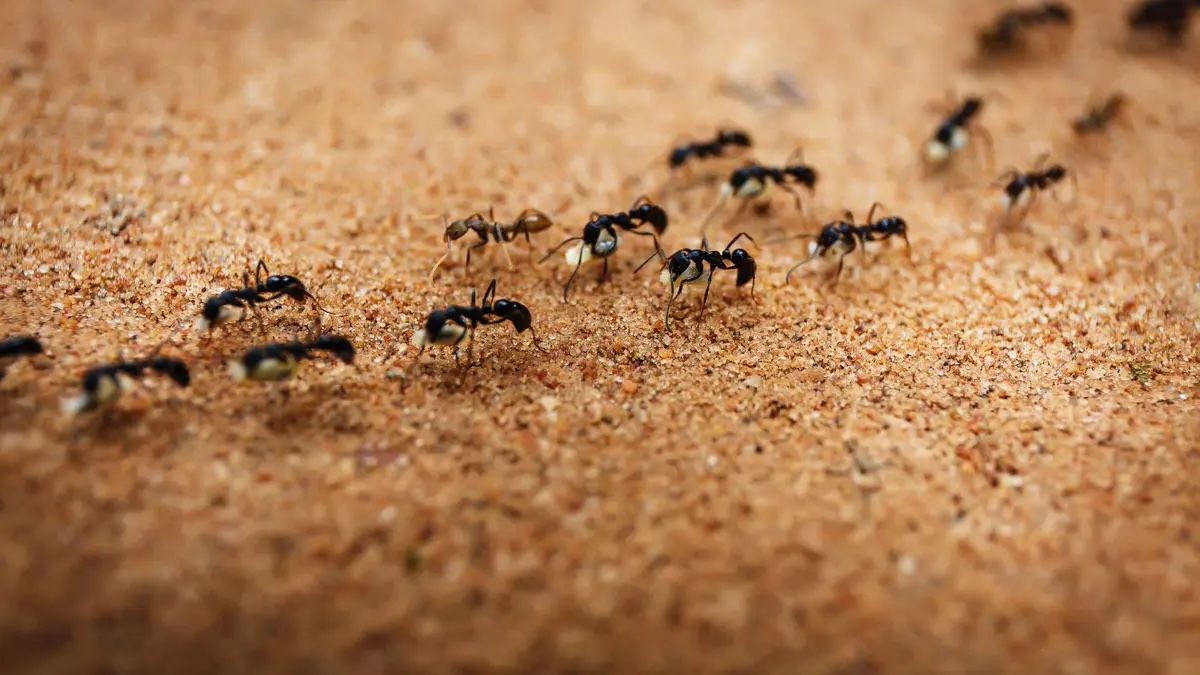In a remarkable breakthrough, researchers at Hanyang University in Seoul, South Korea, have developed tiny magnetic robots that work together like ants to accomplish impressive tasks—moving and lifting objects much larger than themselves. This innovative system of microrobot swarms, powered by rotating magnetic fields, could open up new possibilities for a variety of complex applications, including minimally invasive medical treatments and environmental tasks in challenging conditions.
The research team, led by Jeong Jae Wie from the Department of Organic and Nano Engineering at Hanyang University, is harnessing the collective power of these robots, drawing inspiration from nature’s own cooperative workers: ants. “The high adaptability of microrobot swarms to their surroundings and their ability to perform tasks autonomously were surprising,” said Wie. “These robots work together to accomplish goals, much like how ants collaborate to build bridges or survive floods.”
The concept of robot swarms has been explored before, but this study is particularly groundbreaking due to the use of cube-shaped microrobots. Unlike previous spherical robots that connect through point-to-point contact, the cube design maximizes the robots’ magnetic attraction, increasing their efficiency and the strength of their collective actions. Each microrobot, measuring just 600 micrometers tall, is made from epoxy embedded with ferromagnetic neodymium-iron-boron (NdFeB) particles, allowing them to respond to magnetic fields and interact with one another. Powered by a rotating magnetic field from two connected magnets, these robots can self-assemble into various configurations by adjusting their magnetization angle. This design provides precise control over their behavior, enabling them to work together to perform complex tasks.
“We developed a cost-effective mass production method using onsite replica molding and magnetization, ensuring uniform geometry and consistent performance,” explained Wie.
The researchers tested their microrobot swarms in a range of tasks to evaluate their performance. One of the most impressive demonstrations involved a swarm of 1,000 microrobots that formed a raft on water and carried a pill weighing 2,000 times more than each robot. This experiment highlighted the swarm’s potential for drug delivery applications, where the robots could transport medications across a liquid surface. On land, the swarm successfully transported cargo 350 times heavier than the individual robots, showcasing its ability to move large objects with high efficiency.
Other tests revealed that the microrobot swarms were capable of overcoming obstacles, with swarms designed with a high aspect ratio able to climb obstacles five times taller than the height of a single robot. Additionally, the robots demonstrated the ability to clear blocked tubes, simulating the unblocking of clogged blood vessels, an important potential application in medical treatments.
Perhaps one of the most exciting developments was the use of spinning and orbital dragging motions to control small organisms. In this experiment, the swarm demonstrated the ability to guide and direct the movement of organisms, opening up new possibilities for biological research or environmental applications.
While these results are promising, the researchers acknowledge that more work is needed before the technology is ready for widespread real-world applications. “While the study’s results are very encouraging, the swarms will need higher levels of autonomy and further refinement before they are fully ready for practical use,” concluded Wie.
The potential applications for this microrobot technology are vast. From drug delivery systems that could navigate the human body to precision cargo transport and environmental cleanup, these microrobots represent a new frontier in robotics. Their ability to work collectively and adapt to various environments makes them highly versatile, and as technology continues to improve, it’s likely we’ll see more sophisticated versions of these microrobots tackling complex tasks in diverse fields.
By Impact Lab


